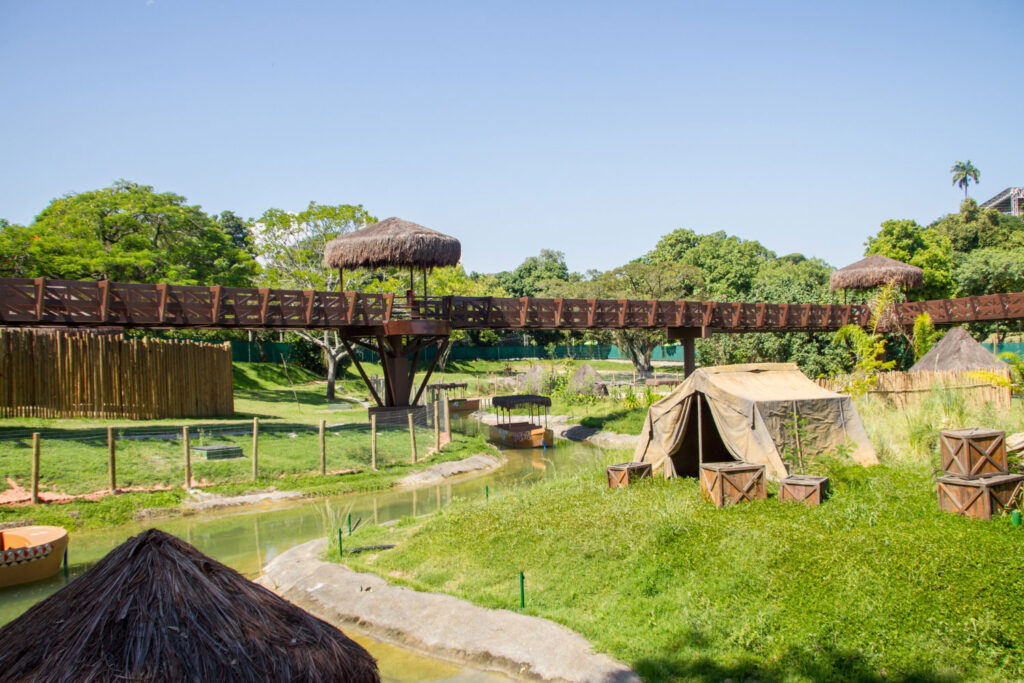Brazil is a country with a great diversity of flora and fauna, with more and more bioparks being inaugurated in different states. But do you know what a biopark is?
Understand right now and get to know some of the most important bioparks in Brazil!
What is a biopark?
Bioparque is a more contemporary facility with some characteristics close to a zoo, being intended for the contemplative tourism of several species of wild animals that are housed in environments developed to recreate the natural habitat of the species involved.
many bioparks, they are natural and urban parks, have the objective of working on projects that develop research in search of the conservation of species, and serve as a didactic way of educating visitors about the environment and animal life.
Discover some bioparks spread across Brazil
Two Brothers Biopark
One of the examples worth mentioning is the Dois Irmãos Biopark, which is currently still called the Dois Irmãos Zoo. It is one of the most important points in Recife, Pernambuco, and is undergoing a revitalization process to ensure improvements in maintaining the well-being of the local flora and fauna, as the area is considered an Atlantic Forest conservation zone.
This park is diverse, as it integrates visitors with nature and promotes workshops, lectures, exhibitions, concerts and other events. In addition, the animals make full use of all the existing space, being shelter for countless species – including animals that are in recovery.
Plantar Ideias carried out a project contracted by the National Bank for Economic and Social Development (BNDES) to restructure the park with improvements that cover all the potential of the site.
The project included a feasibility and structuring study, considering social, technical and environmental demands along with issues of landscaping, business plan and urban design for the zoo to be transformed into the first biopark in the Northeast region.
Rio Biopark
Another zoo restructured to be a biopark is the Rio Zoo. Inaugurated in March 2021, and today called Bioparque Rio, it is a conservation center located in the city of Rio and its objectives are research, education and conservation.
Its space is contemporary and in line with the best environmental conservation and animal welfare practices practiced around the world. Currently, there are 140 species represented in more than a thousand animals that are in a visitation zone that has 60,000 m² in the North Zone of Rio de Janeiro.
As in the previous example, in this biopark research is also carried out to help with the conservation of several species and there is work being carried out to educate visitors from an environmental point of view.
Pantanal Biopark
Bioparque Pantanal is another space for visiting and preserving animals in Brazil. The park is considered the largest circuit of freshwater aquariums in the world and is a major tourist attraction in Campo Grande.
The maximum operating capacity of the park is 7,000 animals of 236 different species, such as snakes, fish and alligators. The space has 32 tanks and around 19,000 m².
The Pantanal Biopark also has a museum and library, and in the 32 tanks there are 230 different species of fish, including species belonging to each of the 5 continents of the world. However, about 80% of the fish come from the Pantanal.
Amazon Biopark
Formerly called Zoobotânico, today the Bioparque da Amazônia is one of the country's bioparks, located in Macapá, Amapá. It is an area of environmental preservation with vast flora, as well as a space of security and guarantee of survival for the animals that live in the park.
The site has more than 70 species of animals and trees, has diverse terrain and has suspended, water and zip-line trails.
As we have seen, there are several bioparks spread across Brazil, revitalized and restructured to better accommodate fauna and flora and meet social, environmental, and structural issues with ample safety and quality.
Visit the website and learn more about Plantar Ideias projects!
Check also: Análise de viabilidade de projetos de arquitetura | Ibirapuera park | Parques Naturais | Parques Naturais




